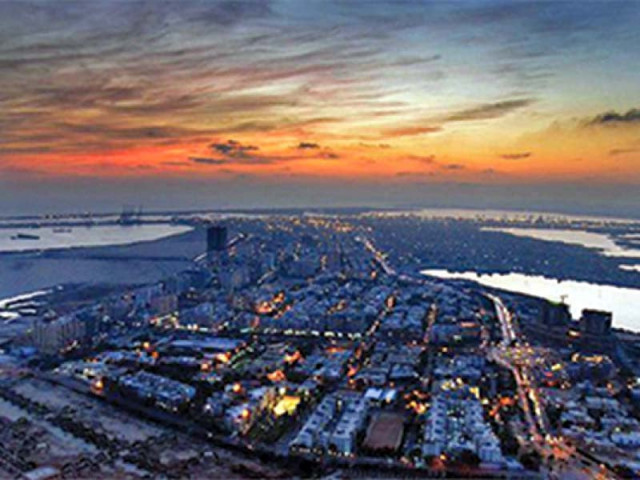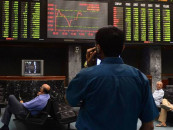SBP projects economic slowdown
Says flexible exchange rate will offset impact of surging global commodity prices

The State Bank of Pakistan (SBP) has voiced fear that surging global crude oil prices will pose a threat to the country’s economic activities, which could slow down.
However, the central bank expressed confidence that a flexible rupee-dollar exchange rate and revised benchmark interest rate would help the economy sail out from the impact of prolonged higher global commodity prices.
“There is uncertainty regarding economic outlook; a major reason is the … global commodity prices,” said an SBP report titled “The State of Pakistan’s Economy – First Quarterly (Jul-Sept) Report 2021-22”. The central bank, which finalised the report in November 2021, highlighted that the global commodity prices remained high due to the emergence of Covid-19 variant Omicron and the Afghanistan crisis.
Pakistan’s economic health and performance remained comparatively better than many other countries around the world during the Omicron phase. However, the global commodity prices continued to inflate for different reasons including the current Russia-Ukraine war.
“The current account deficit is also projected to exceed previous year’s level of 0.6% of GDP (gross domestic product) by a wide margin (over 4% of GDP), mainly due to a higher-than-accounted trade deficit, stemming from the rising trend in worldwide commodity prices,” the report said.
“Nonetheless, the external account is expected to remain manageable, given that the automatically stabilising Pakistani rupee is now complemented by the necessary monetary policy tightening,” it added.
To recall, the bank revised the key policy rate upwards by a total of 275 basis points during September-December 2021 to 9.75%. Moreover, the local currency hit a new all-time low at Rs180.07 against the US dollar on Thursday.
Read: SBP incentivises small accountholders
“Real GDP growth is projected within the previously announced range of 4-5% for FY22, in line with the government’s target of 4.8% and higher than previous year’s provisional growth of 3.9%,” it said, adding that the numbers were not based upon the rebasing of large-scale manufacturing and GDP – done in January 2022.
The statements by the Ministry of Finance and the central bank still claim that Pakistan will achieve GDP growth in the range of 4-5% even after rebasing.
The country has the potential to achieve over 5% growth in FY22. This, however, could lead to a large current account deficit and higher inflation reading.
Therefore, the government and the central bank took fiscal and monetary measures to curb the deficit and inflation, hoping that the GDP would grow around 4.5% in the current year.
“The reversal in the monetary policy stance from September onwards … and other policy measures – such as revisions in Prudential Regulations for auto and consumer financing and a one-percentage-point increase in the cash reserve requirement for commercial banks – are projected to lead to a slight slowdown in industrial growth compared to earlier expectations,” the SBP report said.
Furthermore, overall credit conditions are expected to tighten in the wake of the policy rate hike.
However, major export-oriented industries, especially textiles and rice, would be largely shielded from the impact by their continued access to the SBP’s concessionary refinance schemes. Despite the rise in the policy rate, mark-up rates on these refinance schemes are still unchanged at low levels.
The slight slowdown in industrial activity is expected to offset by the encouraging agricultural performance, based on output estimates of major kharif crops so far, along with the assumption that the higher target of wheat set by the government, from an already record-high output last season, will be met, the central bank said on the basis of the available data for the quarter (Jul-Sep) under review.
Recent proposed cuts to development spending, imposition of additional duties on automobiles and luxury goods, and the withdrawal of a wide range of tax exemptions, are all expected to further improve the fiscal position.
Meanwhile, downside risks to the fiscal outlook include a slowdown in economic activity, which would impact tax revenues, the report said.
While the recent adjustment in the policy rate would limit import demand, payment pressures are expected from capital goods (machinery) imports and from the continued need to import Covid-19 vaccines.
Export receipts are also projected to rise, however, they are not likely to offset the rise in import payments. On the other hand, downside risks to the current account gap mainly relate to a sharp drop in global commodity prices and freight costs, it said.
Published in The Express Tribune, March 18th, 2022.
Like Business on Facebook, follow @TribuneBiz on Twitter to stay informed and join in the conversation.



















COMMENTS
Comments are moderated and generally will be posted if they are on-topic and not abusive.
For more information, please see our Comments FAQ